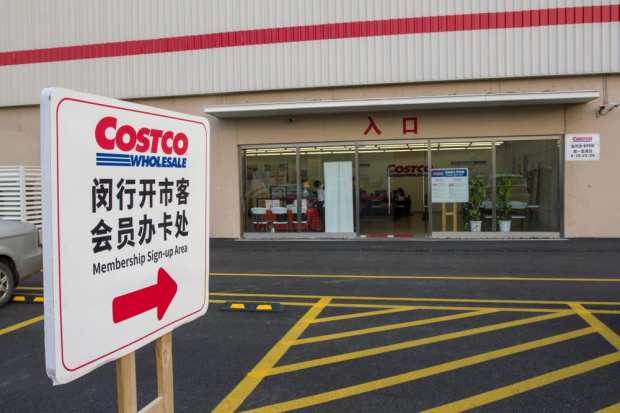Costco’s First China Store Signals Broader Retail Trend Into Foreign Markets

Costco Wholesale Corp. continues to grow its eCommerce and grocery operations – same-day grocery delivery is now available to most of the store’s members, the company recently said – as the merchant continues to bask in the glow of besting Amazon in an important customer satisfaction index.
But can Costco do well in China, and in the midst of a trade war that still seems to be escalating? The answer may hold lessons for other retailers eager to do more in the Chinese market.
According to the South China Morning Post, Costco opened its first brick-and-mortar store in China this week in the Shanghai area, “five years after making its first online foray into China.” The paper reported that “Costco will be targeting China’s affluent growing middle class, who know the brand from traveling abroad.”
A Challenging Time
The store opening comes at what can be politely called a challenging time.
Not only is there the ongoing U.S.-China trade war, but the competitive presence of China-based commerce and payment ecosystems such as Alibaba – which, the newspaper notes, “operates brick-and-mortar Hema stores that integrate online and offline shopping.” Indeed, as PYMNTS has covered, Alibaba is no rookie in the brick-and-mortar arena, though it has not been nearly as aggressive on that front as Amazon. Last year, the China-based firm was involved with fashion brand GUESS on a temporary store at the Hong Kong Polytechnic University.
As well, other foreign retailers have stumbled on the general path Costco seems to be taking in China. As the newspaper said, “German wholesaler Metro is also in the process of selling its operations to a local bidder, while British grocery giant Tesco pulled out of the Chinese market in 2014.”
The Costco opening this week in China, however, apparently went pretty well – at least according to another account, this one from Delish: “The Shanghai store opened Tuesday morning to massive crowds of people eager to get their hands on some bulk items – so much so that Costco started urging people not to come. Starting Wednesday, Aug. 28, traffic controls will be put in place to limit the number of shoppers inside the warehouse to 2,000 people,” Delish said, quoting a local police statement.
Alibaba Opening
Getting into China – and thriving there – is never easy, even in the best of times. But that challenge is leading to opportunity. Consider, again, Alibaba. As PYMNTS recently covered, the Chinese eCommerce giant is welcoming small businesses in the U.S. to sell on Alibaba.com. In fact, Alibaba is hoping to become the marketplace platform of choice in the U.S. by offering smaller businesses the opportunity to sell globally. Alibaba is hoping to win over U.S. businesses as it faces new competitive challenges in addition to navigating the U.S.-China trade war. About one-third of its customers are from the U.S.
To get an online store running on Alibaba will reportedly cost U.S. sellers approximately $2,000. By contrast, Amazon charges third-party sellers by the month or per item. This is the first time Alibaba has extended an invitation to U.S. sellers. Participating merchants will be able to reach potential buyers from China as well as India, Brazil and Canada.
Weaker Demand
But weaker demand from Chinese consumers also can hurt foreign businesses, with Apple being the latest prominent example.
Apple consensus estimates may decrease due to the possibility of weaker demand from China, said Jim Suva, a director and senior analyst at Citi, according to reports. Demand has been slumping in China for Apple products, in part because of the hefty price tag. Chinese competitors are cramming Apple’s same technology into their smartphones, but are charging a fraction of the cost. Additionally, the smartphone market is getting saturated. Consumers are holding onto their phones for longer periods of time, lengthening the replacement cycle. All of that has hurt Apple, as its stature declines in the country.
More generally, the Chinese market presents a formidable – but also somewhat irresistible – challenge to any payments and commerce player standing on the outside looking in. It’s formidable because from both a regulatory and consumer interest point of view, there isn’t a surplus of easy inroads into the market. The challenge can be especially acute when it comes to payments.
“What we see in the consumer payment space inside China is that WeChat Pay and Alipay are dominating, and we don’t see that changing anytime soon,” PingPong Financial U.S. Managing Director Karen Li noted in a recent conversation with Karen Webster and PingPong Financial Chief Business Officer Ning Wang.
Even so, you can bet that more foreign companies – like the case with Costco this week – will keep trying for a bigger piece of this market.
